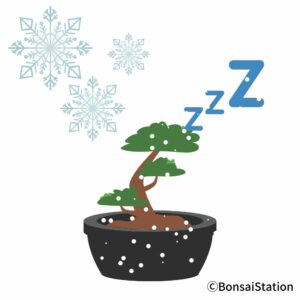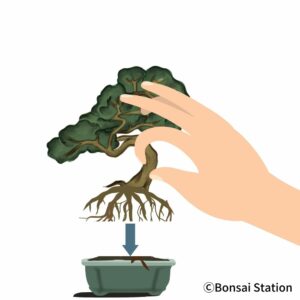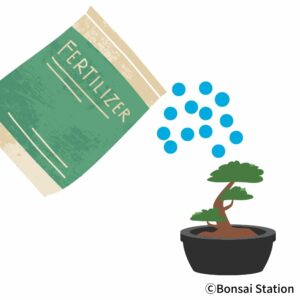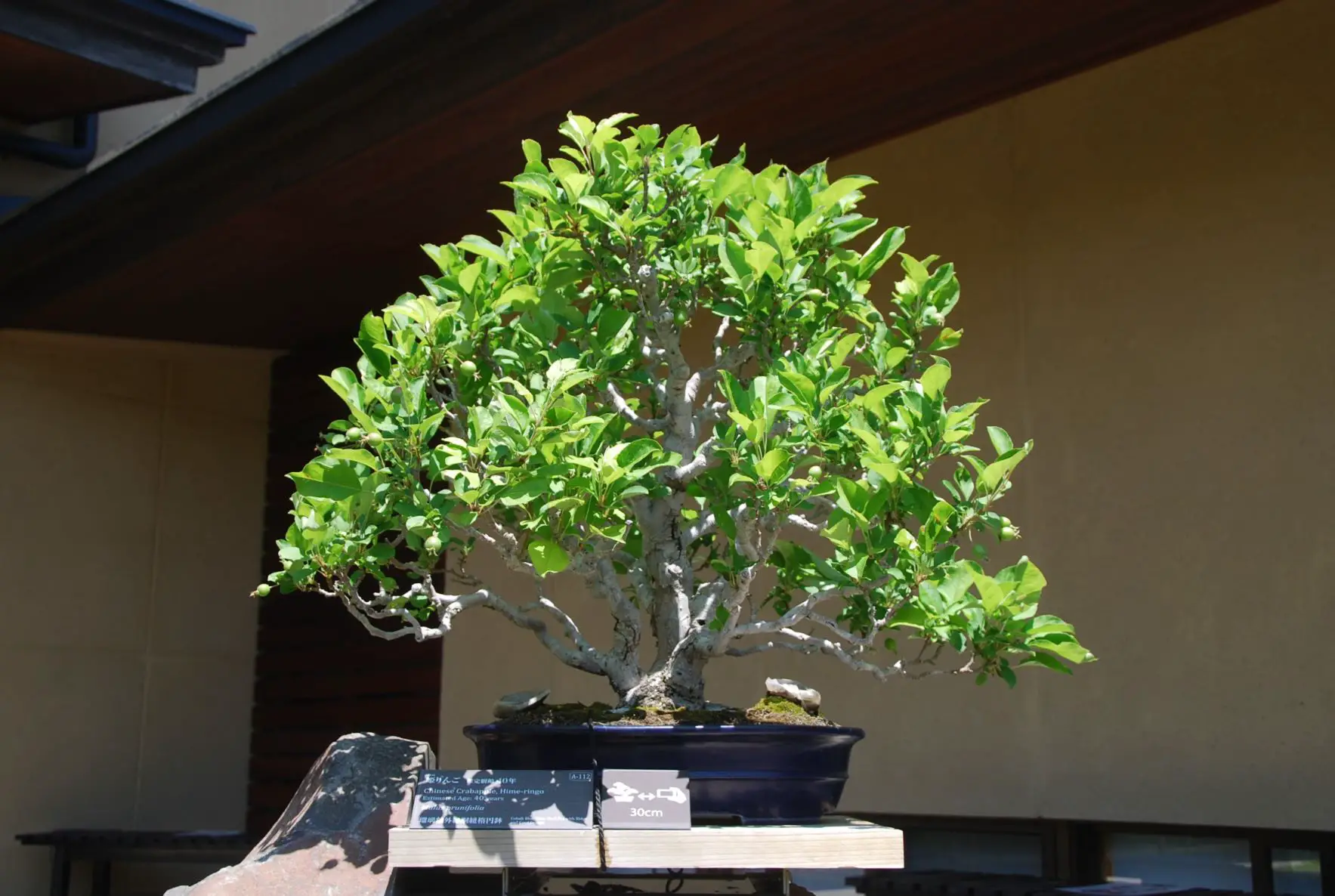How to wake up a dormant bonsai tree

When the days get longer and the temperatures reach mid-40s Fahrenheit (around 7°C), bonsai trees wake up from dormancy and begin to grow. Keep in mind that once the trees start to grow, they lose the ability to readjust to colder temperatures and thus are susceptible to cold.
There are several means of overwintering bonsai trees such as keeping them in a greenhouse, burying bonsai pots in the ground, or just moving them to a warmer place and covering them when necessary. Depending on how they spend the winter, there are slight differences in how you wake them up from a dormant state.
Bonsai in greenhouse
If you keep your bonsai in a greenhouse, you need to slowly acclimate the trees to the outside air by ventilating the air during the day at first and later also night. You can put your bonsai trees out of the greenhouse completely when there is no concern about frost.
The following post shows in detail how you acclimate the bonsai trees in spring.
Note that the warmer temperature in the greenhouse may wake bonsai trees up from dormancy too early. Bonsai trees start growing when it gets warmer during the day, but at the same time try to stay dormant if it gets cold at night. They eventually lose their resistance to the cold, which may damage or weaken new shoots and roots.
To avoid this, ventilate the air in the greenhouse during the day and cover the trees (or greenhouse if you can) at night to minimize temperature differences.
Bonsai buried in the ground

If the bonsai pots are buried in the ground to survive the winter, you do not need to do anything special to wake them up from dormancy. This is as close as it gets to trees in their natural state. Your bonsai trees will start growing when it gets warmer.
When the temperatures are warm enough and needle ice is no longer formed in the morning, it is time to take your bonsai trees out of the ground. Carefully dig up the pots from the ground. The pots may have been damaged during the winter so dig the surrounding ground slowly not to crack them further.
Examine the pots and if undamaged, wash off the soil on the surface of the pots and place them on the shelf or the place where you want to keep them. If the pots are in fact broken or cracked during the winter, replace them with new ones by repotting the trees.
Bonsai kept in warmer place

Bonsai trees start to grow in spring in the direction of the sun and the side not getting sunlight will grow slower. To avoid this, turn the pots from time to time so that the branches on all sides will sprout evenly.
If you have deciduous bonsai trees like Japanese maples, they sprout earlier than other bonsai species. Leave the plant cover as it is, if you have any, until the temperature without the cover warms up enough. New buds will turn red and wither if they are exposed to frost.
Your bonsai trees may have dirt and dust on their branches and leaves even under the plant cover. Water the trees thoroughly from the top to wash away the dirt.
The snow may continue into early spring, and the wet soil may freeze after the snow melts. Snow-covered bonsai soil acts like mulch. The warm sunshine during the day may keep too much moisture and cause root rot. When it snows, remove the snow quickly to prevent it.
Bonsai spring care
Repotting

Early spring is the repotting season because it causes the least damage to the bonsai trees. When the trees wake up from the dormant state, they can recover quickly from the stress of repotting and root pruning.
It depends on where you live, of course, but around March-April is the best time to repot bonsai trees. It is just before they begin to sprout. Deciduous/flower/fruit bonsai trees should be repotted every 1-2 years and coniferous bonsai trees every 3-4 years.
You may be able to repot the bonsai trees late in the spring as long as there is time for the root system to regrow under the climate. The bonsai roots grow most vigorously in spring to early summer but the growth largely decelerates under a hot and stressful summer climate, which might be different from the trees planted in the ground.
You may also be able to repot your bonsai trees in fall in the warm region but it is better not to do so, particularly in colder climates. In colder regions, there may not be enough time for new roots to grow before the temperature drops. The trees then have to go dormant without a good root system to survive during the winter.
So, repotting immediately after awakening from dormancy, when the trees begin to sprout and the tree sap has not started moving much, may least likely fail.
The following posts are a complete guide to how to repot a mini bonsai tree (the steps are the same for normal size bonsai trees) and to make a bonsai soil mix. If you want to know more about repotting, please check the links below.
Pruning
Pruning old branches
In spring, prune branches that are unnecessary for the styling such as old branches or those that have died or broken during the winter.
Tip pruning
When the sprouts grow and the leaves begin to open, it is time to start tip pruning. Tip pruning is different from the usual pinching of new shoots, which is done to encourage ramification. Tip pruning allows the trees to grow smaller leaves which is desirable for bonsai styling. By cutting off newly grown tips, the vigor of the next buds will be weakened and the leaves will be smaller.
If there are branches that grow in different strengths, prune the tips of weaker branches 3 to 7 days earlier than the stronger branches. This will allow the buds of the weaker branches to grow first, taking some of the growing energy from stronger branches, and the strength of the branches will be balanced.
It is important to do tip pruning at the right time: when the sprouts grow and the leaves begin to open. If done too early, the leaves will be a normal size and the pruning will not be effective. If done too late, it will get cold before the new leaves can fully grow.
Watering

As bonsai trees wake up from dormancy and begin to grow, they require lots of moisture and the soil tends to dry out.
When spring comes, water once every day or two days on sunny/windy days, and once every two to three days on cloudy days. Water needle leaves of coniferous trees once every 5-6 days.
To know why you need to water bonsai leaves, please check the following post.
When flowering bonsai trees like cherry and apple bloom, the bonsai soil dries faster. They thus need to be watered more frequently; once to twice a day. These trees are particularly vulnerable to dryness in spring, so give them plenty of water.
That said, giving too much water at this time of the year may make the bonsai trees sensitive to water shortage in summer. If they are accustomed to the abundance of water, they are going to wither quite fast when it lacks. They should thus be watered not too much but not too less.
When it rains for several days in a row, the new sprouts tend to elongate. If that happens, you might have to put the pots at an angle to improve drainage or move them to a place where they are not exposed to rainfall.
On cold days in spring, needle ice may lift the soil and damage the roots. Refrain from watering if there is a risk and prevent bonsai soil using mulch.
There is a perfect post on this site about how to water bonsai tree. If you are interested, please check the link below.
Fertilizing

Start fertilizing when new shoots start to sprout. Start with a very diluted liquid fertilizer and gradually make it stronger. If given plenty in the fall, they don’t need a lot of nutrients at first. Avoid fertilizing for 2 to 4 weeks after repotting.
Coniferous/evergreen bonsai trees
Once a month from early spring to June.
Deciduous bonsai trees
2-3 times/month from early spring to June.
Flowing bonsai trees
Fertilizing flowering bonsai trees is tricky. If you fertilize them sporadically, nutrients are used to grow branches and the flowers may not bloom. Also, fertilizing during the formation of flower buds leads to fewer flowers in the next year.
So start fertilizing 2-3 times a month from early spring. Stop it just before flowering until it ends. Avoid giving nutrients during summer when most flower buds are formed. Start fertilizing again in late summer until fall ends.
Fruit bonsai trees
Fertilizing fruiting bonsai is actually much more difficult than flowering bonsai. After the flowers bloom, the fruit will begin to grow. But if you fertilize the trees at this time, nutrients are used to grow branches and fruits many fall off. Fruiting bonsai trees need nutrients for flowers and fruits but the timing is important.
So start fertilizing fruiting bonsai trees in early spring for flowers. Stop fertilizing when next year’s flower buds start to grow until the fruits grow to a certain extent. Start gradually fertilizing again to make the fruits bigger.
Pest control
As it gets warmer, aphids and other insects may start to appear. Spray insect repellent as a preventive measure.



